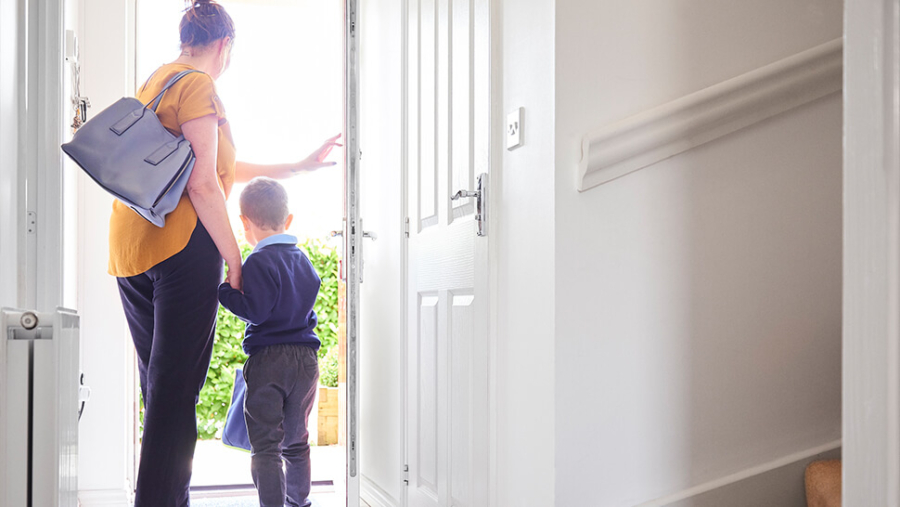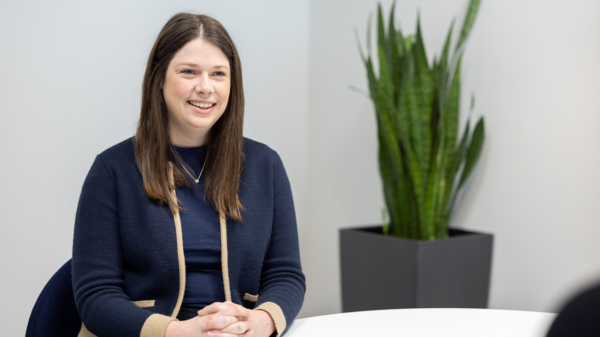

On 2 July 2020, the DfE published its guidance on how to prepare for the full reopening of schools from September.
The guidance applies to primary, secondary (including sixth forms), infant, junior, middle and upper schools, as well as school-based nurseries and boarding schools. The DfE also expects independent schools to follow the control measures in the same way as state-funded schools.
Separate guidance will be published for early years, FE colleges and special schools in due course.
We have summarised the key points from the guidance below. However, schools should read the guidance in full over the summer to ensure that they are adequately prepared for the autumn term. The full guidance can be accessed here.
Section 1: public health advice
Schools should not put rotas in place; instead, they should prepare for the return to full time, full capacity from September, and make adjustments as necessary to implement that. Schools should also consider resuming any breakfast and after-school provision, where possible.
Schools must comply with health and safety law, which requires them to assess risks and put in place proportionate control measures. Schools have a legal obligation to revisit and update their risk assessment to consider the additional risks and control measures to enable a return to full capacity. In doing so, schools should build on the lessons learnt from the phased reopening this summer. Schools should refer to Annex A for full details of the risk assessment requirements for the autumn term.
Schools must work through the system of controls, and adopt measures that address the risks identified within their own risk assessment and that work for their school, whilst still ensuring they are delivering a broad and balanced curriculum for their pupils, including those with SEND.
The system of control includes measures to both prevent and respond to coronavirus, and includes the following steps:
Prevention
Minimise contact with individuals who are unwell by ensuring that pupils do not attend school if they have coronavirus symptoms (or if someone in their household does).
Ensure that hands are cleaned thoroughly and more often than usual.
Ensure good respiratory hygiene by promoting the ‘catch it, bin it, kill it’ approach.
Introduce enhanced cleaning within school, including cleaning frequently touched surfaces often, using standard products such as detergents and bleach.
These first four steps must be in place in all schools, all the time.
Minimise contact between individuals and maintain social distancing wherever possible. Schools must consider how best to implement this in consideration of their particular circumstances, whilst still ensuring a broad and balanced curriculum. The overarching principle is reducing the number of contacts between children and staff, but should not include implementing a rota for attendance. How contact is reduced will depend on the individual school’s circumstances but may include;
- grouping children together
- avoiding contact between groups, including assemblies and collective worship
- arranging classrooms with forward facing desks
- staff maintaining distance from pupils and other staff as much as possible, including by teaching from the front of classrooms wherever possible
- staggering break times and arrival/departure times.
The guidance sets out further detail on how to implement this based on your particular cohort, and for particular issues such as arrival/departure at school, public transport, and SEND considerations. Schools must read the full guidance in this regard.
Wear appropriate personal protective equipment (PPE). This only applies to where a child becomes ill with suspected coronavirus, where 2m distance cannot be maintained, or where a person already has routine intimate care needs that already involves the use of PPE.
Response to infection
Engage with the NHS Test and Trace process by ensuring staff and parents understand the need to self-isolate and book a test where necessary, and to provide details of those that they (or their children) have been in close contact with in the event of a positive test. Schools should ask to be immediately informed of test results.
Manage confirmed cases of coronavirus (COVID-19) amongst the school community by taking swift action. Schools should keep a record of pupils and staff within each group, and any close contact that may occur between groups within school to assist. Importantly, schools must not share the names or details of people with coronavirus unless essential to protect others.
Contain any outbreak by following local health protection team advice.
The above three steps must be followed in every case, where relevant
Schools must read the full guidance on the system of control ahead of reopening in the autumn term.
Section 2: operations
Schools should consider the transport taken by their pupils, including school organised transport, and public transport and follow the guidance, taking necessary measures wherever possible to ensure the safety of pupils. For example, this may include working with transport partners to stagger start times to enable more journeys to occur outside peak times, and encouraging walking or cycling to school, or consider arranging a walking bus service. The Department for Transport is asking local authorities to work with schools in this regard.
School attendance will be mandatory again from the autumn term. Absence will not, however, be penalised if it is due to parents following clinical and/or public health advice. Schools should be clear on their attendance expectations and should support the return to education for those that are at risk of disengagement.
Where a pupil is unable to attend school because they are complying with clinical and/or public health advice, schools should be able to immediately offer them access to remote education.
Shielding advice for all adults and children will pause on 1 August, meaning that staff and pupils currently shielding will be able to return to school, as can those who have family members who are shielding.
Schools should bear in mind the potential concerns of staff, pupils, and parents who may be reluctant or anxious about returning to school and put the right support in place to address this.
This may include those who have themselves been shielding previously, those living in households where someone is clinically vulnerable, or those concerned about an increased vulnerability to coronavirus, including those from BAME backgrounds or who have certain health conditions such as obesity and diabetes. Schools should discuss these concerns and provide reassurance of the measures in place to reduce risk.
With respect to staff, schools should try to accommodate additional measures as far as practically possible, which may include home working, continued furlough or redeployment.
It remains the government’s advice that those who can work from home should continue to do so, wherever possible. Whilst this will not be applicable to most school staff, there may be roles within a school that may be conducive to home working for example, some administrative roles. Schools should consider what is feasible and appropriate for their school.
Schools should ensure that appropriate support is made available for pupils with SEND, for example, by deploying teaching assistants and enabling specialist staff from both within and outside the school to work with pupils in different classes or year groups. Any redeployment should not be at the expense of supporting pupils with SEND.
Recruitment can continue as normal, and the legal requirements regarding pre-appointment checks continue to apply.
Schools can continue to engage supply staff, visiting staff, volunteers and contractors, however consideration should be given to the numbers of temporary staff entering the school premises and minimise this wherever possible, for example, engaging supply teachers on longer assignments.
Schools should consider revising their safeguarding policy (or the coronavirus annex thereof) to reflect the return of more pupils. The DSL should be afforded more time when the school reopens to allow them to better deal with any new welfare concerns.
It is important that, prior to reopening for the autumn term, all the usual pre-term building checks are undertaken to make the school safe. It is unlikely that major changes will need to be made to allow for reopening, but this will depend on the individual school. All schools will need to improve classroom ventilation however, which may require windows to be adjusted to allow for opening.
In the autumn term, schools can resume non-overnight domestic educational visits. Schools should undertake the usual full and thorough risk assessments in this regard.
It is for the individual governing body to determine whether or not to adjust the school’s uniform policy from September. However, schools are encouraged to return to their usual uniform policies wherever possible, taking into account that some families may be experiencing financial pressures that may inhibit their ability to fully comply with uniform requirements. There will be no specific requirements for cleaning uniforms.
Section 3: curriculum, behaviour and pastoral support
Schools should ensure that their curriculum planning provides for all pupils (particularly the disadvantaged, SEND and vulnerable pupils) to catch up and make substantial progress by the end of the academic year.
Curriculum planning should focus on the key principles: education is not optional, the curriculum should be broad and ambitious, and remote education is of a high quality and aligns with the in-school provision.
Teaching time should be prioritised to address significant gaps in knowledge, making use of formative assessment, with the aim to return to the school’s normal curriculum in all subjects by no later than the summer term 2021.
Schools have the flexibility to suspend some subjects for some pupils in exceptional circumstances, and in consultation with parents, provided they can show it is in the best interest of those pupils.
Schools should note that there may be an additional risk of infection in environments where there is singing, chanting, playing wind or brass instruments or shouting. This applies even if individuals are at a distance. Schools should not permit singing, wind and brass playing in larger groups such as school choirs and ensembles, or school assemblies.
Schools have the flexibility to decide how sport and physical activity (including PE) will be provided whilst following the measures in their system of controls. Pupils should be kept in consistent groups, sports equipment thoroughly cleaned between each use by different individual groups, and contact sports avoided. Outdoor sport should be prioritised where possible.
Schools should consider the provision of pastoral and extra-curricular activities to all pupils designed to support the rebuilding of friendships and social engagement, address and equip pupils to respond to issues linked to coronavirus and to support pupils with approaches to improving their physical and mental wellbeing.
In doing so, schools should also provide more focused pastoral support where issues are identified that individual pupils may need help with, involving external support where necessary and possible.
Schools should update behaviour policies to reflect new rules and policies such as movement around school and hygiene, and should ensure that their expectations are communicated consistently to staff, parents and pupils.
Section 4: assessment and accountability
Ofsted and ISI standard inspections remain suspended. Non-routine inspections will be undertaken in the autumn term where commissioned by the DfE and where appropriate.
In order to assess the impact of the coronavirus pandemic on education nationally, it is planned that statutory primary assessments will take place in the summer term 2021.
GCSEs and A levels will take place in summer 2021 but with adaptations, including those which will free up teaching time. Ofqual have launched a consultation on proposed adaptations to exams which closes on 16 July.
Current year 11 and year 13 pupils receiving calculated grades this summer will have the opportunity to sit exams in the autumn.
Performance tables are suspended for the 2019 to 2020 academic year, and no school or college will be judged on data based on exams and assessments from 2020.
Section 5: contingency planning
In the event of an outbreak, remote education plans should be in place for individuals or groups of self-isolating pupils.
In the event of a local outbreak, schools may be required to once again close temporarily to help control transmission. Schools will also need a contingency plan for this eventuality, which may involve a phased return only for vulnerable children and the children of critical workers, and providing remote education for all other pupils.
Schools are expected to have the capacity to offer immediate remote education. Remote education should be of equivalent length to the core in-school teaching they would receive, and should include set assignments of meaningful and ambitious daily work, a planned and well-sequenced curriculum, and access to frequent and clear explanations of new content. Schools should also be able to gauge how pupils are progressing and adjust the pace or difficulty of work where necessary.
Annex A: risk assessment
Schools should read Annex A in its entirety when preparing their revised risk assessment for September.
On the whole, the guidance implemented by the DfE is, in our view, sensible. It is not a ‘one size fits all’ approach, and schools have flexibility to determine the right approach for their own setting. In our view this is the right approach, and schools should be guided by the outcome of their risk assessments, and should act in the best interest of their school community at all times.










